When Should I Consider Purchasing a Building for my Business?

If you're unsure when you should consider purchasing a building for your business, it may be time to review some considerations. In today's economy, purchasing a building for your business can seem like one of the best ways to save money. This blog post examines the pros and cons of each option, so you can choose the right one when analyzing When I Should consider Purchasing a Building for my business.
Before deciding on where your business will be located, there are some things to consider. Should you purchase a building or lease an office? Does your business have options available right now? Let's go through all these aspects to make an informed decision.
What to know when purchasing a building for my business?
Purchasing a building may seem like an easy decision; however, you need to ensure that the building you are purchasing is suitable for your business. The size of the building is one aspect that should be carefully analyzed.
If the building you are looking at is too small, you will not be able to provide adequate space for your employees. On the other hand, if your business grows and you need to hire more employees, you will not be able to do so if your building is too small. You should choose a building that will suit you in the future.
Some businesses require storage space as well. When purchasing a building, you need to consider if your business needs storage space. There is no doubt that keeping costs down is a priority of many business owners. However, this does not mean that you should purchase a too cheap building. With it consider the following evaluations:
Spend time evaluating your current office space
Your lease is coming to an end, and it's time to look for a new location for your business. But before you go shopping around for new office space, you need to evaluate what you can do with your current office. To find out what you can do with your office, look at the options:
- Lease an Office – Lease space that you have right now. You don't have many options right now but can still get something if you choose to.
- Office Space Options: Purchase a Business – Buy the space and pay the rent yourself.
- Office Space Options: Lease and Finance – Buy a business, lease it out for a period, and finance the space until you own it.
Location
This is the top reason you should consider purchasing a building for your business. If you are looking to expand, purchasing a building in a new location can be beneficial because you won't have to worry about moving again. However, a good location is essential.
Finding the right area requires a little research. You will have to look at the business climate and analyze the competition in that area. This will help you determine what you should look for in a business location and how much it will cost to lease that location.
Buy the building or lease it?
When you buy a building for your business, you will have to have enough cash to pay the entire price of that office. If you decide to lease an office, you should also consider looking at the options of renting a store.
When you decide whether or not to buy a building or lease it, look at your budget and think about the long-term plans for your company. If you don't have the money to purchase a building, you can still lease it.
Weighting Factors for businesses to buy a building
Whether you own a start-up or an established company, here are some factors to weigh! If your business is experiencing rapid or continued growth, you may want to purchase a building instead of renting in a month. Anyone considering purchasing a building for their business should consider the following points:
- Potential growth. How long do you expect your business to stay at this location? How big is your market? How likely are customers to go there?
- Capital requirements. How much are the cost of land, building, and equipment? What level of initial investment are you prepared to make?
- Potential risks. How likely are your competitors to move into the same location? How is strong do you think competition will be in your area?
- Government regulation. Do you need government approval to begin a business in this location? Would your business have difficulties if there was regulation?
- Building requirements. What kind of building do you require? How much space is required for the size of your business?
- Cost of operation. How much will it cost to acquire and operate a building? How much will it cost to maintain and repair the building over time?
- Future expansion costs. How much does it cost to expand in a new location? That would be for the land, building, and equipment costs.
- Taxation. Does the government tax business differently for corporations versus individuals?
- Legal requirements. Do you need to register and pay taxes? Is your premises in a commercial zone?
- Management obligations. Do you have any leasing obligations – as either tenant or landlord?
- Labor regulations. Are there labor laws that would affect your operations?
Example of a business purchasing a building vs. Leasing an office:
Another question is whether this is the right time to purchase. The housing market has been steadily rising in past years, and there's no reason to think that won't continue soon. Before deciding, you need to weigh the pros and cons of buying a building or leasing an office.
Jim, who runs his own business leasing office space, is trying to decide if he should purchase an office or continue leasing office space for his business or shift it to rent. Jim has been in business for two years, and his office has 20 employees. He is currently leasing a 3,500 square foot office at $8 per square foot.
The initial lease was for five years, with renewal options every three years. While Jim was initially delighted with his leasing option, the cost of leasing has gotten very high in the second year. He is now looking for ways to reduce leasing costs and decided to evaluate whether he should purchase a building or continue leasing space.
Jim estimates that purchasing a building would be $5,000.00 per month, which includes real estate taxes and insurance. His current lease is $8.00 per square foot, which comes out to be around $3,000.00 per month. Jim realizes that he can save more than $1,000.00 per month by purchasing an office versus leasing. The only evaluation left is finding cash on the spot or lease which option is better to buy the building.
Why consider purchasing a building for my business?
Many business owners don't know why to consider purchasing a building for their business. Purchasing a building allows you to grow your business without worrying about changing locations.
Buying a building also provides a safer location and less time spent worrying about whether you have the right space for your client's needs. It is also important to note that you can purchase the building on a 30-year lease if you have your financial house in order.
Here are top Reasons to Purchase a Building for your business:
- To protect your business from competitors.
- To avoid the extreme costs of renting.
- To reduce administrative costs.
- To reduce risk.
- To have room to expand.
- It gives you a safe place to do business.
- Tax benefits.
- Potential to purchase on a mortgage.
How to finance a building, and what is the lease option?
Financing a building is similar to financing any other asset. However, the financing methods vary and depend on your business and available resources. The two most common methods of financing a building are traditional mortgage financing and capital leases.
Traditional Financing:
With a traditional mortgage loan, you pool money from your savings, investors, and bank loans to purchase real estate. The bank or other lending institution will sometimes finance the entire purchase, but the business owner often financed a portion of the purchase price.
- A traditional mortgage loan has several advantages over capital leases:
- It requires no money upfront.
- The monthly mortgage payments can be written off as a business expense, reducing taxable income.
- A traditional mortgage allows you to build equity in the building, meaning that you will own a larger and larger share of the building with each passing year.
When you finance a building this way, the bank or lending institution will take ownership of the building and collect rent from you. You can deduct your mortgage interest and property taxes from your corporate taxes with a traditional mortgage loan. This will reduce your taxes and help you build equity.
Capital Lease:
A capital lease is an agreement with a financial institution to lease a building under a contract that requires the lessor to absorb most of the costs of ownership, including depreciation and insurance. In essence, a capital lease gives your business the option to purchase a building at the end of its term (normally 10–15 years). This may be desirable if you want to own and operate your building over time.
In the absence of a written option, the lessor has a "statutory" option to purchase the building at the end of the lease term for its depreciated value. It's important to note that you aren't obligated to purchase the building with a capital lease. You might have the right not to purchase the building and invest instead in a building that pays off more quickly and will be easier to convert later into a new business.
Capital lease agreements come with their risks. The main risk with a capital lease is that the lessor can repossess the building if your business stops paying rent. The purchase price of a capital lease may exceed the fair market value of the building.
This is called negative equity, and it means that your business could be liable for the difference between the purchase price and fair market value. However, these risks can be minimized by negotiating an appropriate purchase option. You may also have to pay accrued rent on the building if the building is taken back by the lessor.
What are the negative aspects of buying buildings for my business?
It isn't easy to find good buildings for sale these days. Depending on the real estate market, the purchase price of a building may arise after purchase. That is one thing that you need to consider. Also, it is not easy to build your building from scratch. This can get very costly and sometimes not practical.
If you have deep pockets, then go for it. But you will have to spend more on loans, legal fees, and architects. So, maybe it's better to look at the option of buying an existing building. How to finance a building, and what is the lease option? Financing a building is similar to the funding of any other asset. However, the financing methods vary and depend on your business and available resources.
Buying a Building for your Business
Buying a building is usually a cheaper way to start your business, but its drawbacks. Even though it may be cheaper, you will have to come up with money upfront. Whether a new building or purchasing an existing one, the down payment will be your first financial hurdle.
You'll probably need a large down payment to make a purchase affordable. Some issues come up if you decide to buy a building. The new owners may go bankrupt, or the building will be condemned. This can happen even if you have a good title to the property.
You may also find yourself maintaining a building that isn't worth the money you spent on it. On top of this, a larger inventory can be more of a liability. If you have too many buildings in stock and they start going out-of-date, you'll have to buy new ones and have old inventory going out of date.
Do you feel like you are struggling with putting "strategy" and "business growth concepts" in place that make a difference? Doing it all is overwhelming! Let’s have a honest discussion about your business and see if the Power of 10 can help you. Click “HERE” to have a great conversation with our team today.
Written and Published By The Strategic Advisor Board Team
C. 2017-2021 Strategic Advisor Board / M&C All Rights Reserved
www.strategicadvisorboard.com / info@strategicadvisorboard.com











